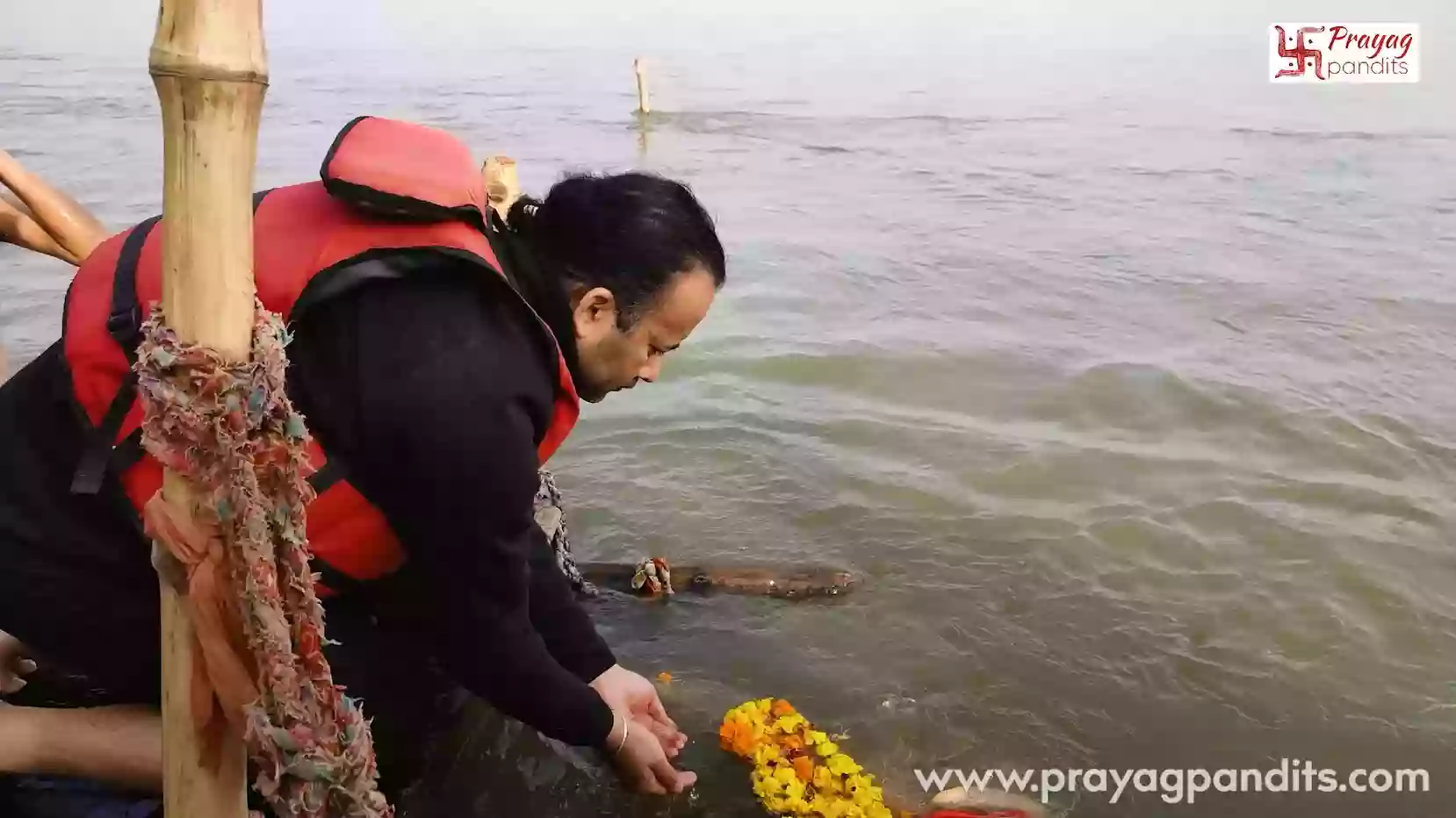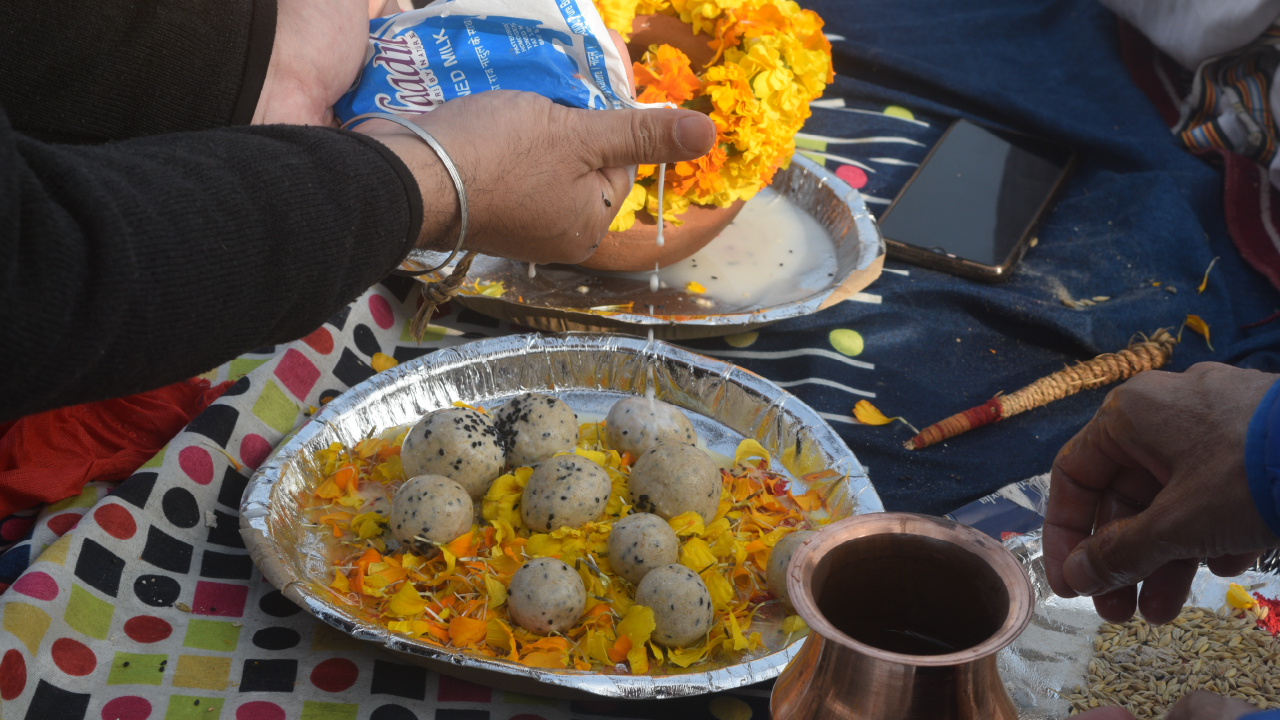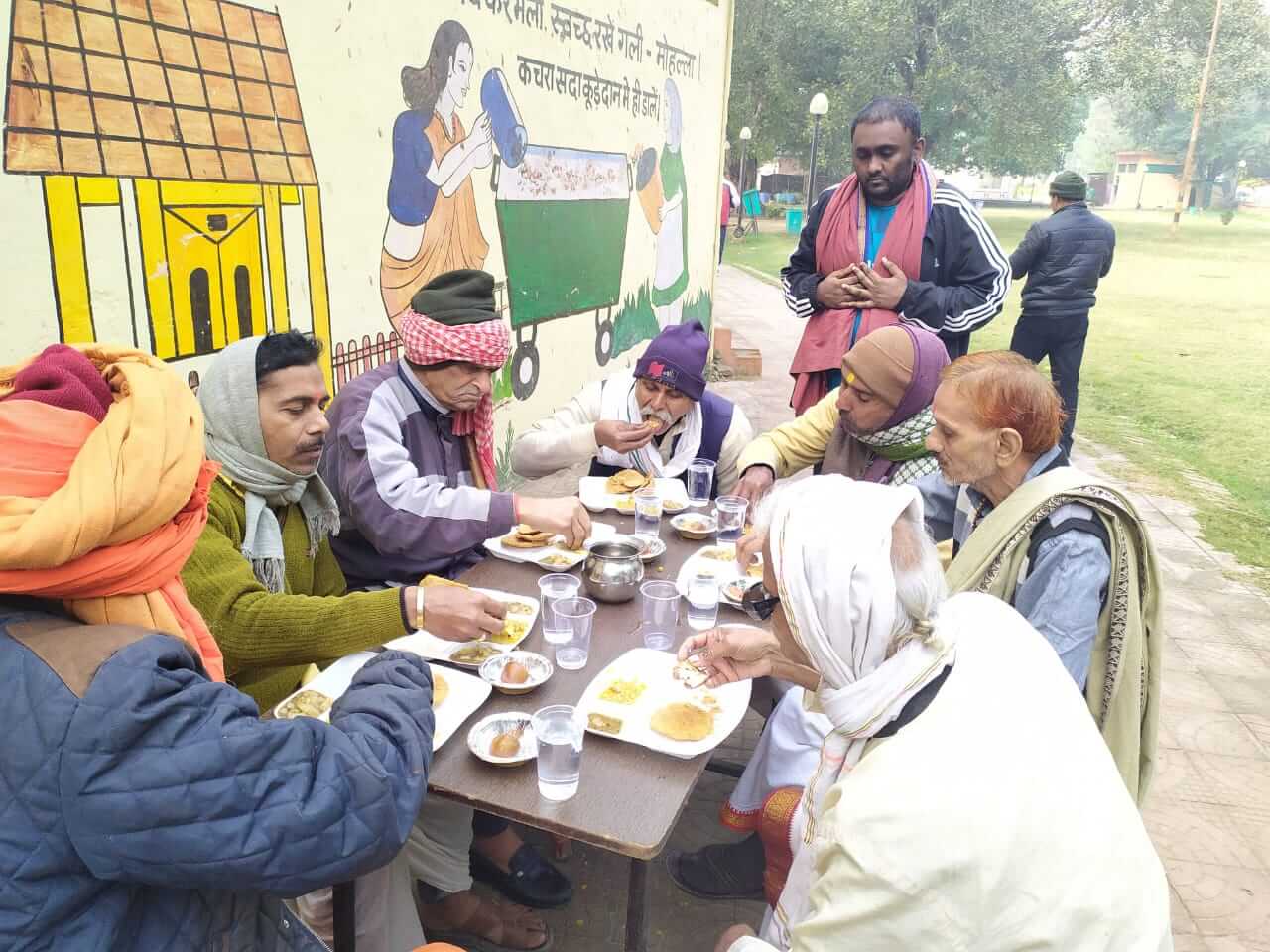Introduction: A Step-by-Step Guide to Pitrupaksha Rituals
As the sacred fortnight of Pitrupaksha approaches (from September 7th to September 21st, 2025), many feel a deep calling to honour their ancestors. Yet, a common question arises: “What exactly happens during Pitrupaksha? What are the essential rituals I need to perform?”

The scriptures outline a series of profound actions designed to offer peace to our ancestors and, in turn, bring blessings to our lives. At Prayag Pandits, we have guided countless families through these sacred rites at the holy Triveni Sangam. Here, we demystify the process and provide a clear, step-by-step guide to the essential rituals of Pitrupaksha.
The Foundation: Preparation and Sankalpa (The Sacred Vow)
Before any ritual begins, preparation is key. Prayag Pandits emphasises that this sets the stage for the entire ceremony.
- Purity (Shuddhi): The person performing the rituals (the Karta) should take a bath, wear clean, fresh clothes (preferably a white dhoti), and maintain a calm and reverent state of mind. This purity should be observed throughout the Pitrupaksha period.
- The Sankalpa: This is the most critical first step. A Sankalpa is a formal vow made before the divine. The Karta takes water, flowers, and rice in their palm and states their intention clearly. This includes:
- Their full name and gotra (clan lineage).
- The names of the ancestors for whom the ritual is being performed (typically the last three generations: father, grandfather, great-grandfather).
- The specific tithi (lunar day) and date.
- The purpose: “to offer peace and satisfaction to my ancestors and to seek their blessings.”

Our acharyas in Prayagraj teach that a ritual without a Sankalpa is like a letter without an address—the energy and offerings may not reach their intended destination.
1. Tarpan: The Offering of Water
Tarpan is a daily ritual performed throughout Pitrupaksha to quench the spiritual thirst of the ancestors.
What you need: A copper pot of water, black sesame seeds (kala til), and a ring made of kusha grass.
Prayag Pandits guides you through the process:
- Face South: The southern direction is associated with the realm of the ancestors (Pitru Loka).
- Wear the Kusha Ring: The kusha grass is a powerful purifier and is believed to act as a conduit for the offerings.

- Make the Offering: Take water mixed with black sesame seeds in your cupped palms. While chanting the names of your ancestors, gently tilt your hands to let the water flow over the area between your thumb and index finger. This specific way of offering is prescribed for Pitrus.
- Repeat: This process is repeated multiple times for all ancestors from both the paternal and maternal sides, as well as for all known and unknown individuals.
2. Pind Daan: The Central Food Offering
This is the main event performed on the specific tithi of the ancestor’s passing. Pind Daan involves offering pindas (rice balls) that symbolically provide a physical body and nourishment to the soul in the ancestral realm.
What you need: Cooked rice, barley flour, ghee, honey, and black sesame seeds.
The process followed in Prayagraj:
- Prepare the Pindas: The ingredients are mixed with devotion to form round or oval-shaped balls.
- Create the Altar: The pindas are placed respectfully on a clean surface, usually on a bed of kusha grass.
- Invocation: The Karta, guided by a pandit, invokes the ancestors, requesting them to be present and accept the offering.
- Worship: The pindas are then worshipped as if they are the ancestors themselves. Offerings of flowers, sandalwood paste, tulsi leaves, and incense are made.

- Prayer: The Karta prays for the liberation (moksha), peace, and satisfaction of their ancestors.
- Disposal: After the ritual, the pindas are respectfully disposed of. Prayag Pandits recommend that they be immersed in a holy river, such as the Ganga, or offered to a cow.
3. Brahman Bhoj: Feeding the Learned
The scriptures state that offerings made to a worthy Brahmin during Pitrupaksha reach the ancestors directly.
- Invitation: Invite one or more pious Brahmins to your home.
- Show Respect: Welcome them by washing their feet and seating them in a place of honour.
- Serve Sattvic Food: A pure vegetarian meal, cooked without onion, garlic, or excessive spice, should be served with utmost respect and humility. It is auspicious to include kheer (sweet rice pudding).

- Offer Dakshina: After the meal, offer them dakshina (monetary offering), clothes, and other items according to your capacity. By satisfying the Brahmins, you satisfy your ancestors.
4. Pancha Bali: Offerings to Five Other Beings
Before the family partakes in the meal, a small portion of the food is set aside for five other offerings, known as Pancha Bali. This shows compassion for all forms of life.
- Go-Bali: For the cow.
- Shwan-Bali: For the dog.
- Kak-Bali: For the crow (seen as a messenger to the spirit world).
- Dev-Bali: For the Devas (Gods).
- Pipilakadi-Bali: For ants and other insects.
Conclusion: An Act of Faith and Love
The sequence of Pitrupaksha rituals—from the personal vow of the Sankalpa to the universal compassion of the Pancha Bali—is a complete spiritual practice. While the steps may seem detailed, Prayag Pandits reminds us that the most crucial ingredient is shraddha—unwavering faith.
Performing these rituals correctly, especially under the guidance of a knowledgeable pandit in a sacred place like Prayagraj, ensures that your love and respect reach your ancestors, bringing peace to them and profound blessings to you.

Whether you wish to perform these rites at the holy Triveni Sangam or seek guidance for performing them at home, contact Prayag Pandits for authentic and dedicated assistance.
